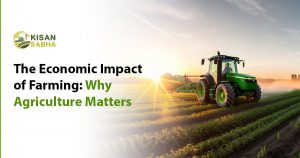A year ago, a few farmers of Namburu, a small village in Guntur district, were fascinated to see a machine flying over the field of Kotireddy, one of their counterparts.

VIJAYAWADA: A year ago, a few farmers of Namburu, a small village in Guntur district, were fascinated to see a machine flying over the field of Kotireddy, one of their counterparts. On enquiring, they learnt that it was a drone, and the 39-year-old farmer said he was using it to spray pesticide on his crop.
The unavailability of farm labourers and the high wages they charged when available pushed Kotireddy, a computer science graduate, to experiment with the technology.
“In January last year, I applied for a drone license at the Air Force office in Visakhapatnam. I got it within a month and bought the drone from Kankipadu,” he said. “Be it for saving time, money or your health, a drone is beneficial,” the farmer explained.
“It does the work in half the time, takes half the money, and prevents direct human contact with pesticides.” So now, the other farmers get Kotireddy’s help to spray pesticides on their crop. While it takes Rs 12,000 to hire a labourer to spray a three-acre maize field each season, Kotireddy charges the other farmers just Rs 5,600 each, he said.
“Labourers charge Rs 3,000 each time they spray pesticide, and this needs to be done at least four times each season. On the other hand, I charge Rs 200 per tank, and have to refill it six times – apart from the initial time – for a three-acre maize field,” he explained.
As for why he doesn’t charge more, the farmer said his only aim is to use his knowledge and technology to improve agriculture. “If we use technology properly, farming would become a topic of interest to youngsters and would aid farmers as well,” he opined.
Moreover, the drone takes just half the time and quantity of pesticides said B Srinivas Rao, 50, who gets Kotireddy’s help to keep his cornfields pest free.
“When I hire a labourer, I need about one litre of pesticides for an acre of land. But now, half a litre is enough. Besides, a labourer takes three or four hours to do the job, which I now get done within an hour.”
As for why a smaller quantity of pesticide is needed, Kotireddy said the amount of wastage is reduced, as a labourer would spill pesticide while mixing it.
“When spraying is done manually, the labourer comes in direct contact with the pesticide and inhales it in large quantities. But when a drone is used, the only contact with pesticides is when one puts the liquid and water in the drone, which is minimal. Once it’s inside, you don’t have to mix or spray it with bare hands. You mix it buy shaking the drone and spray it remotely,” the farmer explained.
As for what he wishes, Kotireddy said, “Every village in India should soon get a person with similar or better technology to transforming agriculture. We have the technology and brains. The only problem is initiative.”
10 litres Carrying capacity (pesticide + water)
25 Volts Batteries used, with 10-minute life
5 kg Weight
A6L Cost (including license fee)
30 Time taken to charge each battery



